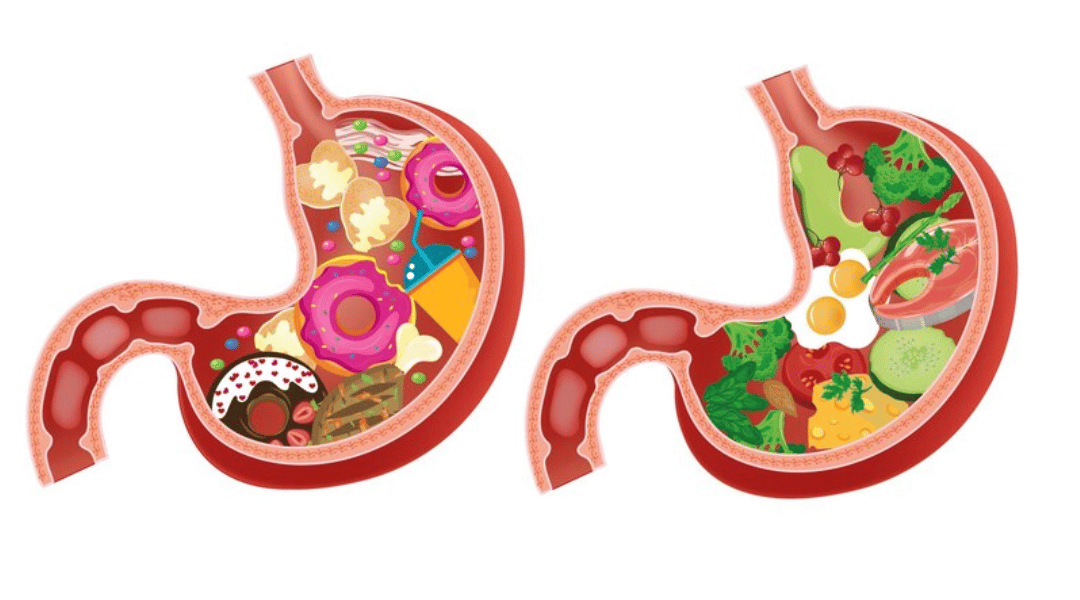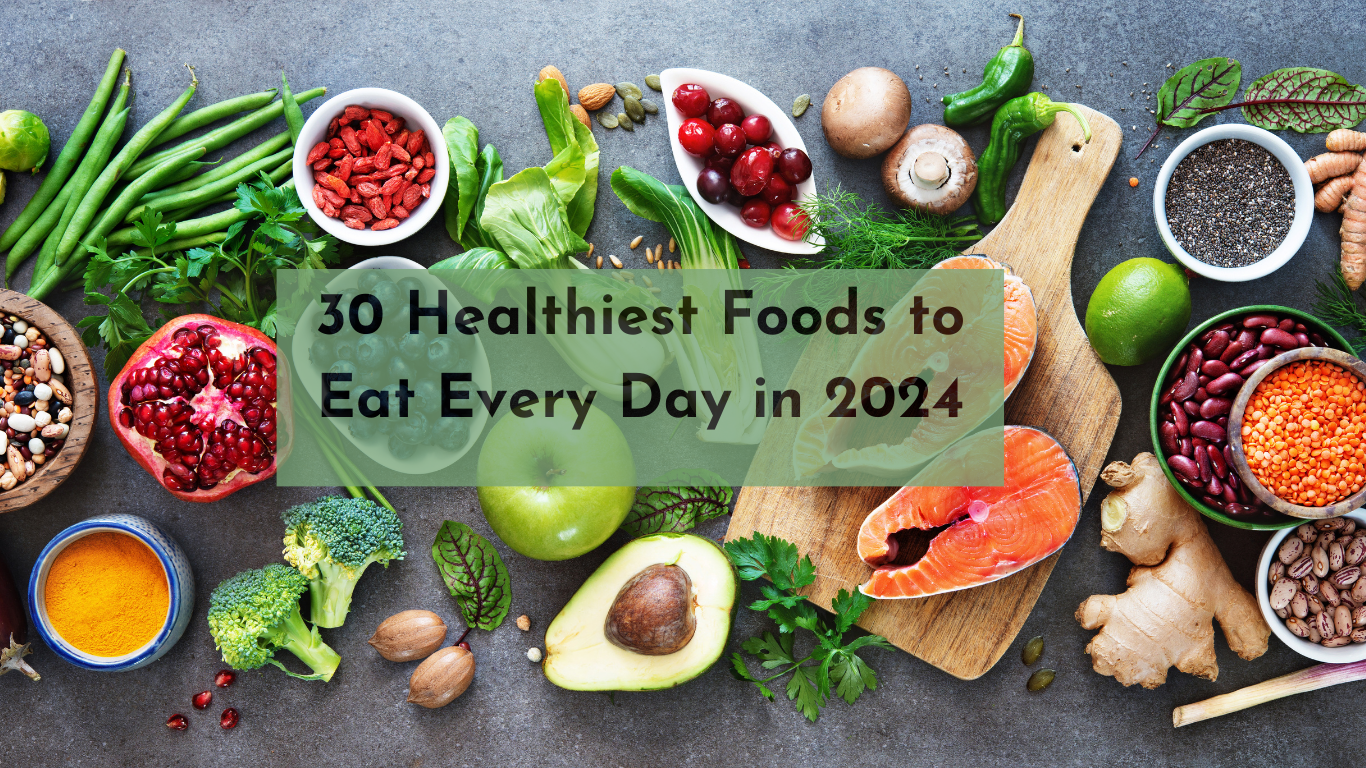Food Digestion Time Chart
Food Digestion Time Chart provides an overview of how long it takes for different types of foods to pass through digestive system. Due to their high water and fiber content, fruits and vegetables typically take about 20 to 30 minutes to leave stomach. Proteins, such as meat and fish, require around 2 to 3 hours, while carbohydrates, like bread and rice, take a similar amount of time. Fats in oils and butter have longest digestion time of approximately 4 to 5 hours. Individuals can support better digestion and overall digestive health by understanding these digestion times and following tips like chewing thoroughly, staying hydrated, and including fiber in the diet. However, individual factors may cause variations in digestion times.
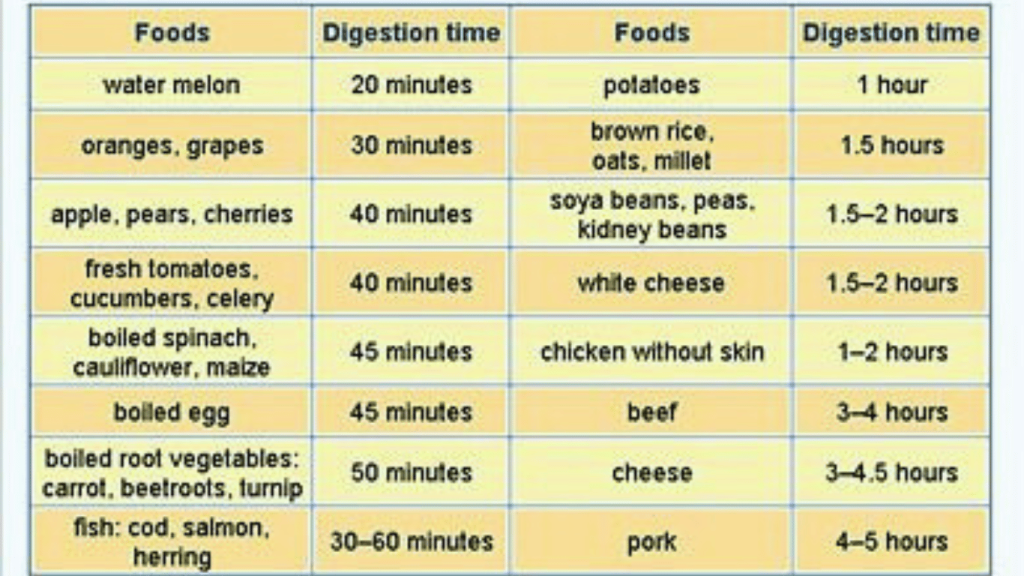
From Food to Poop: How Long Does Digestion Take?
Digestion is a fascinating journey that begins when we eat food and ends with eliminating waste. Entire process can take anywhere from 24 to 72 hours, depending on the individual and types of foods consumed.
Mouth and Stomach: Process starts in the mouth, where food is broken down into smaller pieces by chewing and mixed with saliva. From there, food digestion time chart
Travels down: Esophagus and enters stomach. In the stomach, gastric juices break down proteins, creating a semi liquid mixture called chyme.
Small Intestine: Partially digested chyme moves into small intestine. Here, majority of digestion and nutrient absorption takes place. Enzymes from pancreas and bile from liver help break down proteins, fats, and carbohydrates into their basic building blocks. These nutrients are then absorbed through walls of the small intestine and transported to various parts of body through bloodstream.
Large Intestine (Colon): Any undigested food particles and waste products that make it through small intestine enter large intestine, also known as the colon. Primary role of colon is to absorb water and electrolytes from remaining mixture, turning it into a more solid form.
Formation of Feces: As waste continues its journey through colon, bacteria in gut play a crucial role in further breaking down certain substances and fermenting undigested carbohydrates. This process produces gasses and vitamins (such as B and K).
Elimination: Finally, indigestible and unabsorbed remnants, along with dead cells and bacteria, form feces. Feces are stored in rectum until a bowel movement is triggered. Muscles of the colon contract, pushing feces towards anus, where they are eventually expelled from body.
Time for Food to Leave the Stomach:
Fruits: It typically takes about 20 to 30 minutes for fruits to leave stomach. They are relatively easy to digest due to their high water and fiber content.
Vegetables: Like fruits, vegetables also take around 20 to 30 minutes to leave stomach. However, some vegetables with high fiber content may take slightly longer.
Proteins (Meat, Fish, Poultry): Protein rich foods require a longer time, roughly 2 to 3 hours, to leave stomach. Digestion of proteins involves action of stomach acids and enzymes.
Carbohydrates (Bread, Rice, Pasta): Carbohydrates usually take 2 to 3 hours to pass through stomach. Digestion of complex carbs begins in the mouth with action of enzymes like amylase.
Fats (Oils, Butter): Fats have a longer digestion time, around 4 to 5 hours, due to their complex structure. They undergo emulsification in small intestine before absorption.
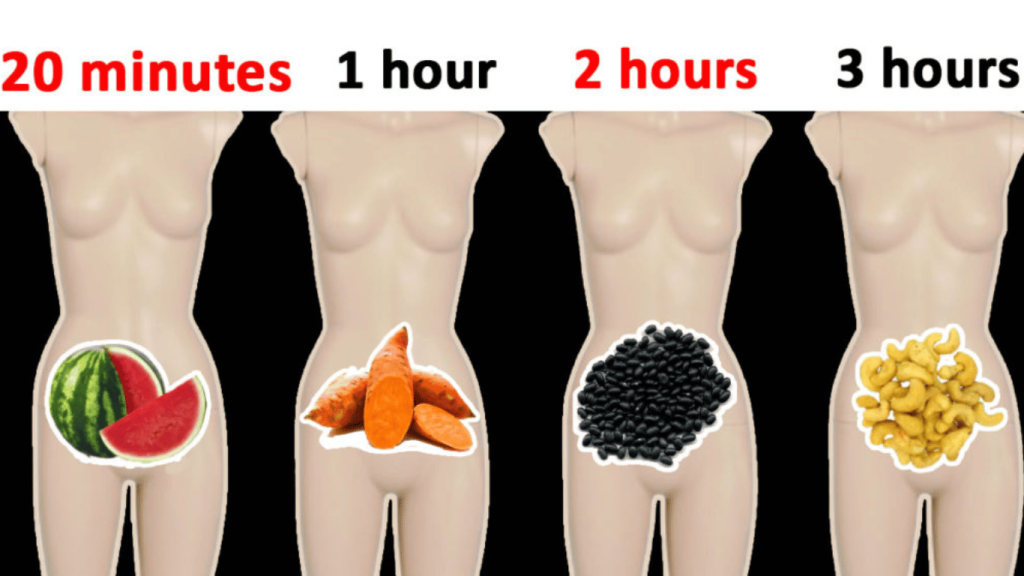
Tips for Better Digestion
Chew Thoroughly: Chewing food digestion time chart
Well aids in the mechanical breakdown of food, making it easier for enzymes to act on it during digestion.
Stay Hydrated: Drinking enough water supports digestion and helps move food through digestive tract.
Eat Mindfully: Avoid rushing meals as it can lead to overeating and indigestion. Enjoy your food digest time chart and listen to your body’s fullness signals.
Include Fiber: A fiber rich diet promotes regular bowel movements and supports a healthy digestive system.
Probiotics: Consuming probiotic rich foods or supplements can improve gut health and aid digestion.
How Long Is This Gonna Take?
Duration of digestion varies from person to person and depends on several factors, such as age, overall health, individual metabolism, and types and quantities of food consumed. It is essential to recognize that a balanced diet that includes a mix of meat, vegetables, and other food digestion time chart groups helps maintain a healthy digestive system.
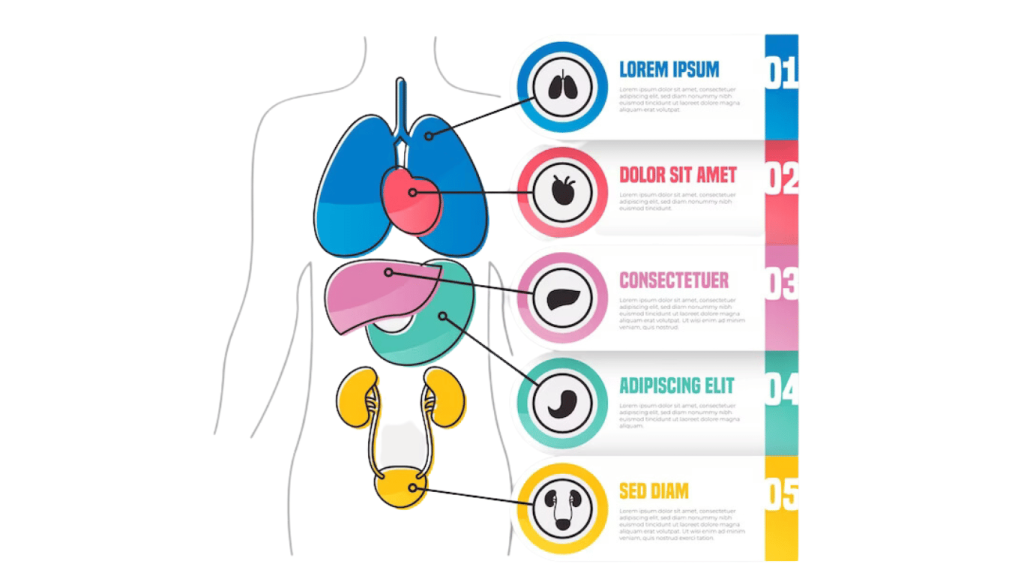
How long does it take to digest food?
This time it takes to digest food varies depending on type of food consumed and individual factors. Digestion process begins in mouth as the food digestion time chart is chewed and mixed with saliva, breaking it down into smaller particles. Once swallowed, the food travels down esophagus to the stomach, where it undergoes further breakdown with help of stomach acid and enzymes. Semi digested food then moves into small intestine, where most nutrient absorption occurs. The entire digestion process can take 24 to 72 hours, with individual foods passing through different stages at different rates. Factors such as complexity of the meal, person’s metabolism, and overall digestive health also influence digestion time.
Fruit Digestion Time
Fruits are generally easier to digest than other food digest time chart groups due to their high water content and simple carbohydrates. Citrus fruits, like oranges and grapefruits, take around 30 minutes to 2 hours to be fully digested. Bananas and apples contain more fiber and may take slightly longer, usually between 40 minutes to 2.5 hours. However, digestion time can vary depending on metabolism and overall health.

Vegetable Digestion Time
Vegetables are also relatively easy to digest, especially when cooked. Leafy greens like spinach and lettuce can be digested within 30 minutes to an hour. Cooked vegetables, such as carrots or broccoli, may take around 1 to 2 hours for complete digestion. Fiber content in vegetables contributes to a feeling of fullness and helps regulate bowel movements.
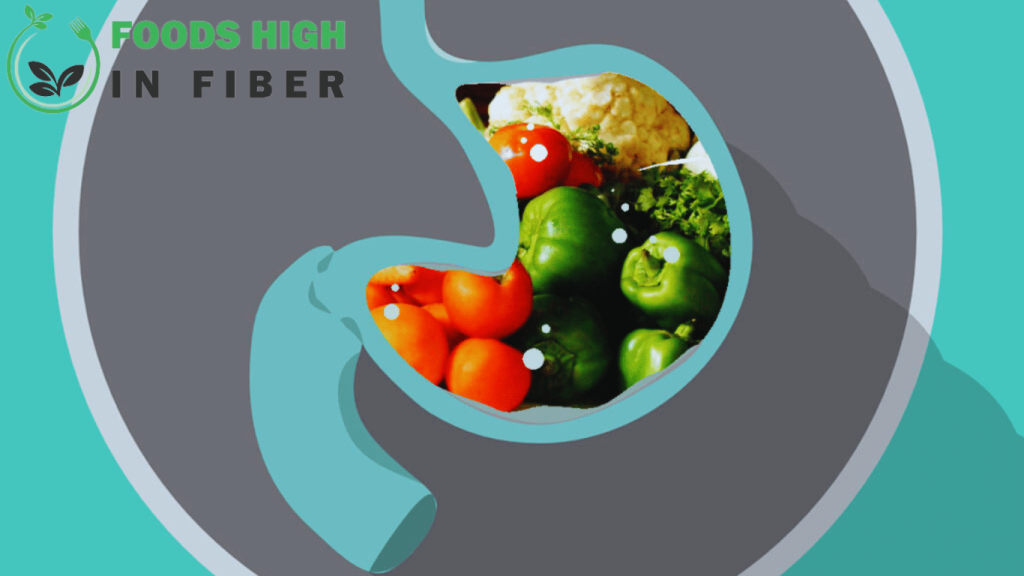
Meat Digestion Time
Meat is a more complex food group containing proteins that require substantial breakdown. Digestion time for meat varies depending on type and cooking method. Fish and poultry, being leaner meats, generally take about 2 to 3 hours to digest. Red meats, like beef or lamb, can take 3 to 5 hours. Presence of fats and proteins in meat makes digestion process slower, demanding more work from the digestive system.
Nut Digestion Time
Nuts, though technically a type of meat due to their high fat content, undergo a digestion process similar to vegetables. Foods high in fiber content in nuts may slow the digestion process compared to other types of meat. Generally, nuts take around 24 to 48 hours to be fully digested, and body absorbs their nutrients.
Process of Digestion
These are Following below Process of digestion:
Oral Stage of Digestion
Digestion process begins in the mouth, where food is broken down into smaller pieces through mechanical action of chewing and mixed with saliva. Saliva contains enzymes like amylase, which initiate the chemical breakdown of carbohydrates into simpler sugars. Oral stage not only helps reduce size of food digest time chart particles but also starts process of chemical digestion, particularly for carbohydrates.
Gastric Stage of Digestion
Once partially digested food, known as a bolus, leaves the mouth, it enters the stomach, where gastric stage of digestion takes place. stomach is a muscular organ that churns and mixes bolus with gastric juices, including hydrochloric acid and pepsin. These gastric juices create an acidic environment for activating pepsin, an enzyme that breaks down proteins into smaller peptides. Stomach’s muscular contractions also help further break down food digestion time chart and turn it into a semi liquid substance called chyme.
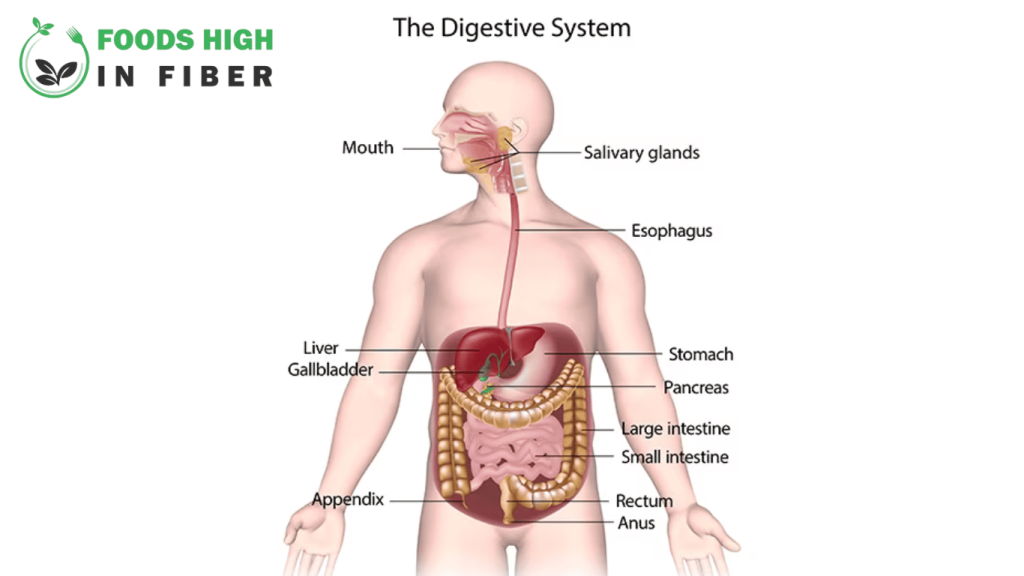
Intestinal Stage of Digestion
After the gastric stage, chyme is gradually released into small intestine, primary site for nutrient absorption. Here, intestinal phase of digestion occurs, where bile from the liver and pancreatic enzymes are introduced to chyme. Bile emulsifies fats, breaking them into tiny droplets, and pancreatic enzymes continue digestion of carbohydrates and proteins. Small intestine’s walls have numerous tiny finger like projections called villi, which significantly increase surface area for nutrient absorption. Nutrients, including amino acids, fatty acids, vitamins, and minerals, are absorbed through the villi into bloodstream to be transported and utilized by body.
Throughout these stages of digestion, body efficiently breaks down complex food digest time chart substances into their essential components, allowing for proper absorption and utilization of nutrients for energy, growth, and overall health. Each stage is vital in this intricate process, ensuring body receives the necessary nutrients to function optimally.
Fast Facts on Digestion
- Digestion process starts in the mouth, where enzymes in saliva begin to break down carbohydrates.
- Thanks to its acidic environment and protein digesting enzymes, stomach plays a crucial role in digesting proteins.
- Small intestine is where most nutrient absorption occurs, and liver and pancreas play vital roles in this process.
- Fiber in vegetables and fruits aids digestion by adding bulk to the stool and promoting regular bowel movements.
- Drinking water during meals can help digestion by facilitating food movement through digestive tract.
Tips to Improve Digestion
To improve digestion, there are several tips you can follow. First, chew your food thoroughly to aid in the breakdown process before it reaches your stomach. Incorporate a balanced diet with plenty of fiber rich fruits, vegetables, and whole grains to support healthy bowel movements. Stay well hydrated by drinking enough water throughout day. Limit fatty, greasy, and processed foods, as they can slow digestion. Regular exercise can also promote better digestion by stimulating intestinal contractions.
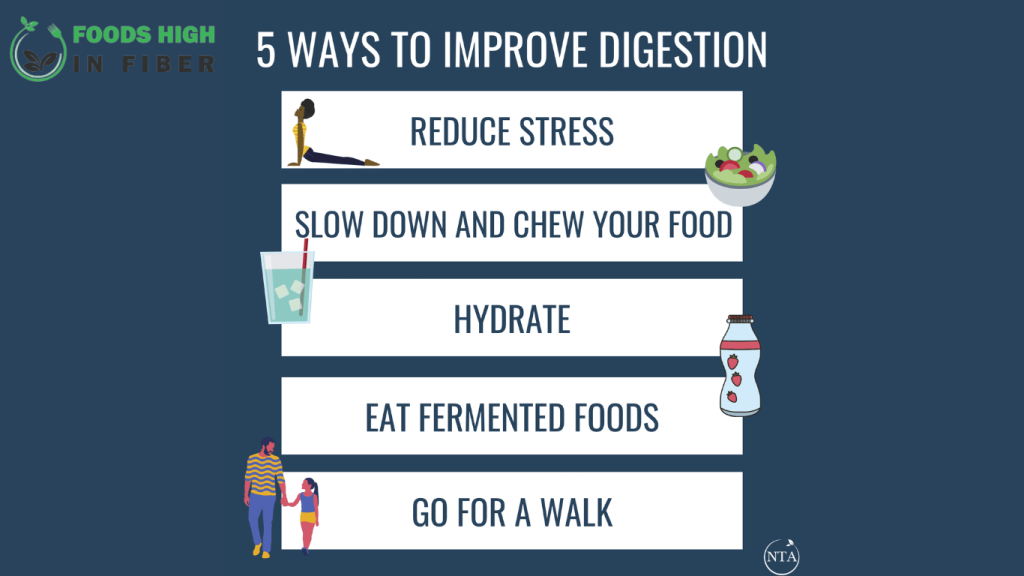
Eat a Balanced Diet
Maintaining a balanced diet is essential for promoting good digestion. Including a variety of nutrient rich foods such as fruits, vegetables, whole grains, lean proteins, and healthy fats can aid in the digestive process. Fiber rich foods like vegetables, legumes, and whole grains can help regulate bowel movements and prevent constipation. Additionally, avoiding excessive intake of processed foods, sugary snacks, and fatty meals can reduce risk of indigestion and other gastrointestinal discomforts.
Stay Hydrated
Adequate hydration is crucial for optimal digestion. Drinking enough water throughout day helps to soften stool and facilitate its passage through digestive tract, preventing constipation. It also aids in producing digestive juices necessary for breaking down food digestion time charts and absorbing nutrients effectively. Besides water, herbal teas and natural fruit juices without added sugars can also improve digestion.
Take Probiotics
Probiotics are beneficial bacteria supporting gut health and improving digestion. Consuming probiotic rich foods like yogurt, kefir, sauerkraut, kimchi, and kombucha can help maintain a healthy gut flora balance. These beneficial bacteria aid in breaking down food, producing essential enzymes, and enhancing nutrient absorption. Probiotics can also help alleviate irritable bowel syndrome (IBS) symptoms and reduce bloating and gas.
Regular Physical Activity
Physical activity is vital for promoting a healthy body and mind. Whether through daily exercise routines, sports, or outdoor activities, being physically active helps improve cardiovascular health, strengthen muscles and bones, manage weight, and enhance mood. Regular exercise reduces risk of chronic illnesses like heart disease, diabetes, and obesity. It is recommended to find activities that you enjoy to maintain consistency and make fitness an enjoyable part of your lifestyle.

Stress Management
Managing stress is crucial for maintaining good health. Stress management techniques such as meditation, deep breathing exercises, yoga, or mindfulness can help reduce stress levels and improve overall well being. Relaxing and engaging in activities that bring joy can significantly contribute to a healthier and more balanced life.
Dental Hygiene
Oral health is essential to overall health, as it affects various body systems. Regular dental check ups, brushing twice daily, flossing, and using mouthwash can prevent tooth decay, gum disease, and bad breath. Proper dental hygiene helps maintain a bright smile and supports better digestion by ensuring efficient chewing and breaking down of food.
Digestive Enzymes
Digestive enzymes play a vital role in breaking down food digest time chart into nutrients body can absorb and utilize. Some people may have inadequate enzyme production, leading to digestive discomfort and nutrient deficiencies. In such cases, digestive enzyme supplements can aid digestion, improving nutrient absorption and reducing bloating or indigestion.
Managing Digestive Conditions
For individuals with chronic digestive conditions such as irritable bowel syndrome (IBS), acid reflux, or inflammatory bowel disease (IBD), managing these conditions is crucial for overall health. Adopting a well balanced diet rich in fiber and avoiding trigger foods can help alleviate symptoms. Seeking medical advice and following prescribed treatment plans can significantly improve the quality of life for those with digestive conditions.
3 Yoga Poses for Digestion
Yoga has long been revered for its ability to improve overall well being, and its positive impact on digestion is no exception. Incorporating specific yoga poses into your daily routine can help alleviate digestive issues and promote a healthy gut. Here are three highly effective yoga poses that can aid digestion:

Seated Forward Bend (Paschimottanasana)
Seated Forward Bend is an excellent yoga pose for stimulating abdominal organs and stretching the entire digestive tract. Inhale deeply and, as you exhale, reach forward and try to touch your toes or hold onto your ankles. Maintain a straight back and avoid rounding your shoulders. This forward fold helps to compress the abdomen gently, encouraging digestion and relieving bloating and gas.
Twisting Chair Pose (Parivrtta Utkatasana)
Twisting Chair Pose is fantastic for detoxifying the body and improving digestion. Begin by standing with your feet together, bending your knees, and lowering your hips as if sitting on an imaginary chair. As you twist to one side, hook your elbow outside the opposite knee and lengthen your spine. This confusing action massages abdominal organs, stimulating digestion and enhancing digestive process.
Child’s Pose (Balasana)
A deeply relaxing and soothing yoga pose, Child’s Pose, can be incredibly beneficial for digestion. Start kneeling on the floor, then lower your hips onto your heels. Extend your arms forward, bringing your chest towards ground. This gentle compression of the abdomen helps release tension and bloating, allowing for better digestion and reducing discomfort.

Avoid Trigger Foods
In addition to incorporating yoga poses into your routine, it’s essential to be mindful of your diet to support healthy digestion. Identify and avoid trigger foods that might cause digestive distress. These trigger foods can vary from person to person but often include greasy or fried food digestion time chart, spicy dishes, carbonated drinks, processed snacks, and excessive amounts of caffeine. Opt for a balanced diet of fiber, fruits, vegetables, and whole grains to promote a smooth and efficient digestive process.
Digestive Issues
Digestive issues refer to various digestive problems, including the esophagus, stomach, small and large intestines, liver, gallbladder, and pancreas. Common digestive problems include acid reflux, indigestion, bloating, gas, constipation, diarrhea, irritable bowel syndrome (IBS), and gastroenteritis. These problems can be caused by poor diet, stress, food digest time chart intolerances, infections, or underlying medical conditions. It’s essential to seek medical advice if digestive issues persist or significantly impact daily life, as early diagnosis and proper management can lead to improved digestive health and overall well being.
Lactose Intolerance
Lactose intolerance is a common digestive problem when body lacks the enzyme lactase, which breaks down lactose, a sugar in milk and dairy products. Without enough lactase, undigested lactose passes into colon, which interacts with gut bacteria, leading to symptoms like bloating, gas, diarrhea, and abdominal discomfort. While lactose intolerance is not life threatening, it can significantly impact a person’s quality of life. Managing lactose intake through lactose free alternatives or lactase supplements can help individuals with lactose intolerance enjoy dairy products without experiencing distressing symptoms.
Celiac Disease
Celiac disease is a severe autoimmune disorder triggered by ingesting gluten, a protein found in wheat, barley, and rye. When individuals with celiac disease consume gluten, their immune system attacks lining of the small intestine, causing inflammation and damage to villi, tiny finger like projections that aid nutrient absorption. As a result, malabsorption of nutrients occurs, leading to symptoms like diarrhea, weight loss, fatigue, and nutrient deficiencies. Treatment for celiac disease involves adopting a strict gluten free diet to prevent damage to intestine and alleviate symptoms.
Acid Reflux
Acid reflux, commonly known as heartburn, occurs when stomach acid flows back into the esophagus, tube connecting mouth to the stomach. Occasional acid reflux is normal, but chronic and severe cases may indicate gastroesophageal reflux disease (GERD). GERD can lead to more severe complications, such as esophagitis, ulcers, and Barrett’s esophagus. Lifestyle changes, dietary adjustments, and medications that reduce stomach acid production are typical approaches to managing acid reflux and GERD.
Irritable Bowel Syndrome (IBS)
Irritable bowel syndrome (IBS) is a functional gastrointestinal disorder characterized by symptoms that can vary from person to person. Common symptoms include abdominal pain, bloating, constipation, diarrhea, or alternating between two. Exact cause of IBS is not fully understood, but factors such as abnormal gut contractions, hypersensitivity to pain, and gut brain axis dysfunction may contribute to its development. Management of IBS often involves dietary changes, stress reduction, and medications to alleviate specific symptoms.
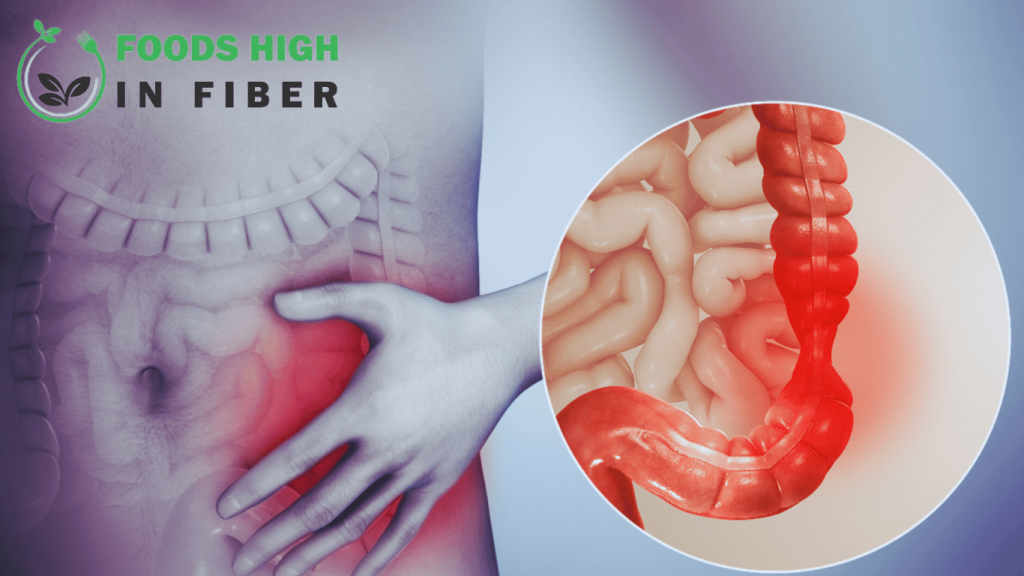
Conclusion
Food digestion time chart can vary depending on the type of food consumed and individual factors. Generally, liquids pass through the stomach in about 20 to 30 minutes, while fruits and vegetables take 20 to 40 minutes. Foods rich in protein, like meat or fish, require 2 to 3 hours, and complex carbohydrates take around 3 hours. Fats have longest digestion time of 4 to 5 hours or more. Age, overall health, and any digestive issues can influence digestion. Being mindful of food choices and eating habits can promote better digestion and overall digestive health.

